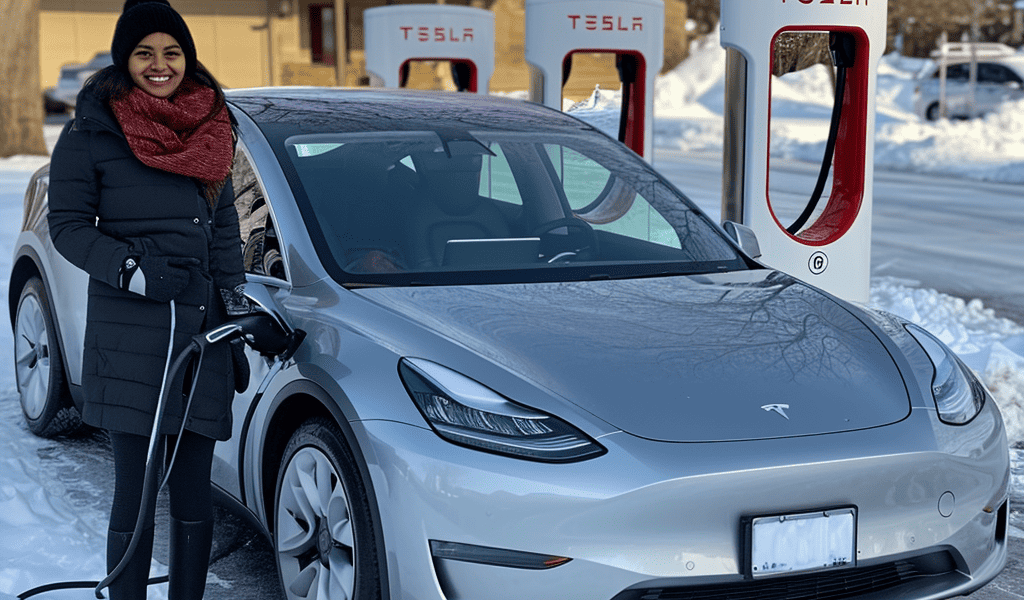Ankita Bansal prepares to charge her Tesla in Ann Arbor, Michigan, on Wednesday. Photograph: Carlos Osorio/AP
For nearly a week, frigid temperatures from Chicago to northern Texas have made life painful for electric vehicle owners, with reduced driving range and hours of waiting at charging stations.
In Oak Brook, Illinois, near Chicago, on Monday, television reporters found Teslas that were running out of juice while in long lines for plugs at a Supercharger station. The temperature hit a low of -9F (-23C).
Outside Ann Arbor, Michigan, Teslas were plugged in at six of eight charging stations on Wednesday as the wind howled with a temperature of 7F (-14C). At least one driver was nearly out of juice.
It is well known that EVs lose some of their travel range in the cold, especially in subzero temperatures like those that hit the nation’s mid-section this week. Studies found that range loss varies from 10% to 36%. EVs also do not charge as quickly in extreme cold. Some Tesla owners near Chicago told reporters their cars would not charge at all.
Experts acknowledge that cold weather can be hard for EVs, but they say with some planning and a little adjustment, owners should be able to travel pretty much as normal.
Inside EV batteries, lithium ions flow through a liquid electrolyte, producing electricity. But they travel more slowly through the electrolyte when it gets cold and do not release as much energy. That cuts into the range and can deplete a battery faster.
The same happens in reverse. Since electrons move more slowly, the battery cannot accept as much electricity from a charging plug. That slows down charging. The problem is that when temperatures plunge, batteries have to be warm enough for the electrons to move. And they have to be even warmer at fast-charging stations like Tesla’s.
“Pretty much anything that’s a chemical substance slows down when you get to a low temperature,” said Neil Dasgupta, associate professor of mechanical and materials science engineering at the University of Michigan.





